-
Written ByRenan França

-
Last UpdatedOctober 12, 2020
What is Python and what is it for? Beginner's guide

Knowing what Python is is essential in the Information Technology market today. If you are in the mood to start in this programming language, you’ve come to the right place!
"Python is a programming language used by giants all over the world, like Google, Amazon and NASA. It is also used in today's most innovative projects, such as artificial intelligence and data science.
But even though it is one of the most powerful languages in application development, it is open, simple and easy to learn.
So, if you are starting to program or want to enter this world, Python can be your gateway!
Follow us to learn all about this language:
What is Python and what is it for?
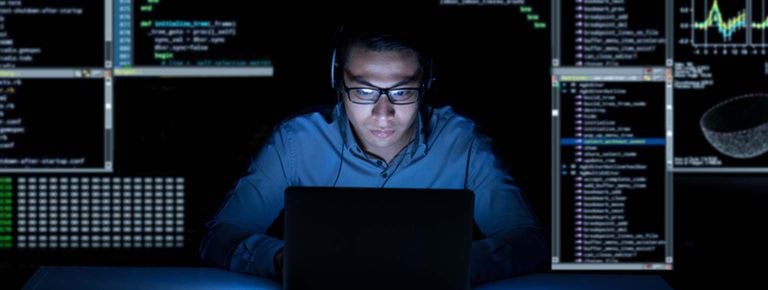
Python is an extremely simple and versatile open source programming language.
It works with different paradigms and offers a huge library with functions and classes, which help to structure good code.
For many developers, it is considered the best programming language out there. Not by chance it is one of the most used today, both in small and medium businesses, as well as in giants in the market such as Google, Amazon, NASA, Facebook, Microsoft and Globo. It can be used in several solutions, from web programming to more advanced technologies in scientific computing, machine learning and blockchain.
But Python is not only a development technology.
The language carries a programming philosophy, which encompasses principles such as simplicity, logic, readability, clarity and practicality. One of the commandments of Python is this: if the implementation is difficult to explain, then it's a bad idea.
Focused on simplicity, Python has a much smaller learning curve than other programming languages, which makes it a good option for beginner programmers.
What are the origins of Python?
Those who think Python is a new language in the IT world are wrong. It was 1989 when Dutch mathematician and programmer Guido van Rossum was looking for a hobby to take up during Christmas week.
At the time, he ended up developing a system to improve other programming software used in his institution, Centrum Wiskunde & Informatica (CWI), in the Netherlands. He called this system Python, since he was inspired by the humor of the comedy group Monty Python.
In the following years, he improved the language and submitted a funding proposal for the project, called Computer Programming for Everybody. His goal was to create an easy, intuitive, open source language, close to English, so that anyone could develop their applications with it.
In 2001 Python was officially released and soon became a popular programming language.
After that, Guido received awards, worked at Google and Dropbox and continued leading the Python community worldwide.
What can be done in Python?
Python is a super versatile programming language and can be used in many applications, from basic to advanced, from small to large projects.
Python is typically used in web programming. You can build websites, mobile applications, algorithms, games, 3D graphics and other web applications.
Python is also widely used in the field of data science. For example,The language allows you to process large databases due to the plethora of libraries and patterns focused on numerical calculations and statistical analysis.
This power of data treatment and processing also makes Python stand out in the area of artificial intelligence (AI) and its sub-areas, such as machine learning and deep learning.
It is also possible to identify patterns, cross data and automate actions, such as making predictive models of technical analysis for the financial market or even improving SEO strategies.
Besides the standard library, there are additional extensions that allow for the development of all kinds of applications. The module libraries, which have specific functions, extend the power of the language. Django (agile web development), ZODB (database management) and Pygame (game development) are some of them.
Why learn Python?
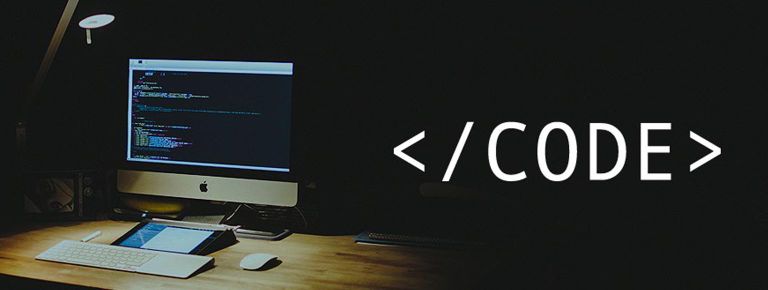
You may have noticed that Python is one of the simplest and easiest programming languages to learn, right? These principles were at the origin of the language and have been maintained over the years, which has generated a large community of developers around it.
Therefore, learning what Python is and how to use it is a great gateway to the web development universe. Even if you have never programmed with it before, it is possible to learn quickly and rely on the extensive documentation produced by the community.
But it is not only the ease that explains the importance of learning Python. As you can develop a multitude of applications, this language also makes it easier to enter the job market, which offers several openings for Python developers.
Moreover, this is a language with great potential for the future, since it is capable of processing large amounts of data and, therefore, is used in solutions for artificial intelligence, machine learning, deep learning and neural networks, for example. Therefore, you will prepare yourself for the current market, but for the next years as well.
Advantages and disadvantages of Python
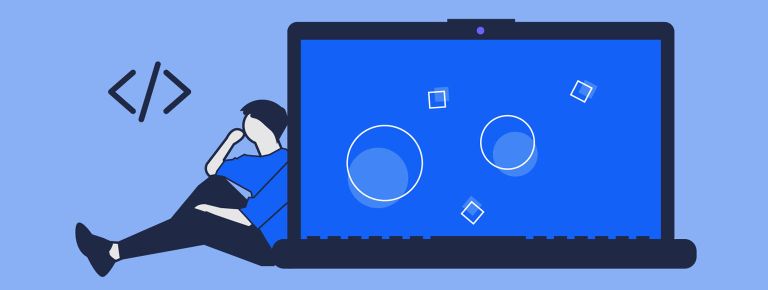
Python is one of the most used and most promising languages. But despite its success, some factors may weigh against it. Let's talk about the main advantages and disadvantages of
Python so that you can decide if it is worth learning this programming language. Check it out:
What are the advantages of using Python?
Python has many advantages, especially for those who are new to programming, mainly:
Robust, high-level language that allows you to do more with less;
Versatile (can be used in several web, desktop, mobile and game applications);
Multiplatform, runs on any system (Windows, Linux, Mac);
Simple syntax (allows you to write the same requirement in fewer lines of code);
- Interoperability with other programming languages;
- Variety of libraries, modules and frameworks;
- Less learning curve than other languages;
- Open source (accessible to anyone);
- Global community (constantly evolving);
- Abundance of documentation on the internet (clears doubts at any time);
- Employability (good market prospects).
What are the disadvantages of using Python?
A language so simple, but at the same time so powerful, can it have any disadvantages? In some cases, yes.
In some applications, Python can be slow. This is an interpreted language, that means you need an interpreter to run your programs and therefore it is usually slower than compiled languages.
Besides that, some developers criticize Python in the development of mobile applications, where it does not present the same efficiency as other languages. In this case it is necessary to combine it with other languages to fix problems.
The extreme ease of learning Python can also be understood as a disadvantage. Some professionals may begin to program without thinking about what problems they need to solve, which makes projects more fragile and susceptible to failure.
Due to its ease, new users might also skip some steps while learning and end up with some concepts that are weaker than they should be, which can become a problem when dealing with more complex projects.
What does a Python developer do?
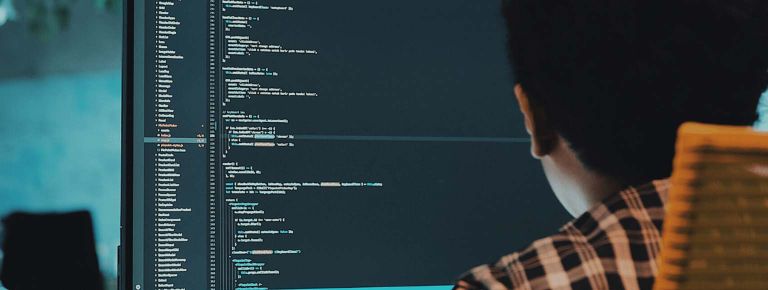
Those that work with Python become Python developers. This professional knows the programming language well and develops a wide variety of applications, and can specialize in a specific area, such as web programming or artificial intelligence.
But what does this professional do on a daily basis? Let's see how a Python developer works so that you can get to know this profession better. Here are some activities that one develops:
- Analyze and structure databases;
- Encodes systems in Python;
- Maintenance of systems and possible corrections;
- Build, debug and test systems.
Besides these technical activities, the Python developer can also get involved in management and supervision tasks. Especially in higher positions, this professional also:
Applies software development methodologies (such as Scrum and Kanban);
Manages development projects;
Leads development teams.
Python developer positions: what is the job market like in this area?
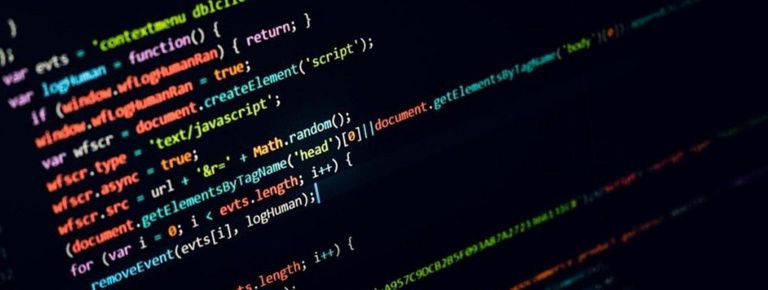
If you are looking to learn Python, know that you will enter a promising and valued market.
Python is one of the most used programming languages by companies of all sizes and segments, besides being one of the developers' favorites. In the last few years, it has had great growth and is still on the rise.
In fact, because of the Coronavirus pandemic in 2020, many companies started to adopt the remote work regime.
This regime facilitated the hiring of developers who did not live near the headquarters of large companies. In other words, in practice, it became even easier for companies to recruit developers.
Ok, but who hires developers? These opportunities are usually within companies that have a strong IT area, in startups or technology companies. You can follow several paths:
- Game development;
- Web development and frameworks;
- Big Data;
- Web testing;
- AI and machine learning;
- Data science;
- Internet of Things.
Salaries are also interesting and are close to the average of the software developer career. The Glassdoor website says that the average national salary of the Python developer is $ 4,038.00 per month. You should also remember that there are differences among regions of the country and the levels of positions (junior, full, senior).
Oftentimes, companies feel a lack of qualification from the professionals inthe area, as many people enter on the wave of popularity of Python without adequate knowledge of its performance. So, those who want to stand out in the job market need to seek knowledge, create projects, build their portfolio and constantly qualify.
What should I know to learn Python?
It's easy to learn Python, but that doesn't mean it doesn't require any effort. You can start from scratch, without any programming knowledge, but you can better enjoy learning if you already understand what it is and how it works:
Programming logic;
Language syntax;
Development Frameworks;
Data structures;
Algorithms.
It is also important to know the main characteristics of Python's language about common terms in the programming universe. Python is a language:
Interpreted (the interpreter translates each passage of the source code for the machine to perform tasks);
High level (the interpreter deals with technical details of the computer, while the low level is the programmer who does it);
General purpose (the language can be used to develop several applications);
Dynamic types (the interpreter finds out what is the type of each variable).
These are the characteristics that make Python so simple and friendly to programmers. Now, let's see some details about the programming language that will help you take your first steps.
What are the basic Python commands?
Python is a programming language, which means that there are rules that determine how words are arranged and how they send instructions to the computer to perform tasks. When writing the source code of an application, you are sending these instructions.
When you program in Python, you use a few lines of code to create numerous features. Python is believed to use 3 to 5 times less code than Java and 5 to 10 times less code than C++.
To better understand how Python is simpler and get familiar with code, see the example below of how "Hello, world!" is written in different languages.
In Python:
In Java:
In C:
Note that in the example of Python, the print() function was used, which is one of the main language commands. It is used to instruct the computer to display a message on the screen. Just put the phrase inside the brackets and in quotes, Python then tries to display it in the program. There are also other commands, like:
input - Used to receive the data that the user provides through the keyboard.
if - Used to create conditional commands.
while - Used to repeat blocks of code until a condition is met.
To program in Python, you need to know the basic language commands. So you will start building your lines of code according to the rules of Python.
Python versions: what is Python 1, Python 2 and Python 3?
This is a very common question: which version of Python is better?
To answer this question, let's explain the differences between them. These are the main versions of Python so far:
Version 1.0 (published in January 1994);
Version 2.0 (published October 2000);
Version 3.0 (published in December 2008).
The most recent version is Python 3.8.5. Within each major update, there are a number of improvements, with new features, new libraries and bug fixes. So it's important to monitor the updates.
The most updated version is certainly the most advanced. It improved and fixed problems from the previous version. Therefore, in new projects and for beginners, Python 3 should be prioritized.
Still, most applications have been developed in Python 2, which is not compatible with the latest version. So, what you program in 2.0 may not run in 3.0.
In general, it is recommended that you migrate to the latest version. However, this migration can bring technical problems and be unfeasible in some cases. So, maybe the programmer needs to work on the second version itself. Therefore, it is also important to know the previous versions, in case you need to deal with projects developed long ago.
What is IDE?
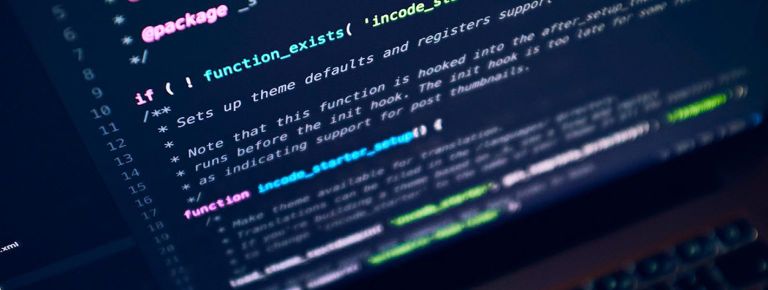
IDE is an integrated program development environment in Python.
You could use any text editor to program in Python and save the file to .py extension. However, common text editors do not offer many resources for program development in Python. That's why there are IDEs, which offer more resources for this programming language and make the programmer's life easier.
Best IDEs for Python
No IDE is better than the other. Everything will depend on what the programmer prefers or the environment in which he feels more comfortable. So, an IDE that is good for you may not be good for another professional.
The Python community in Brazil has gathered a list of paid and free IDEs to help you choose. Below, we have selected a few:
IDLE: This environment comes with the installation of Python for Windows, has a simple interface and is easy to use. Recommended for beginners.
VSCode: It is one of the most used development environments in the world, not only for Python. It was developed by Microsoft, is highly customizable and offers support for Python through the Microsoft Python extension.
Jupyter: It is one of the best IDEs to work with large data sets. Jupyter's integrations also allow you to create attractive data visualization presentations.
Pycharm: It is an IDE dedicated exclusively to Python. Developed by JetBrains, it allows code analysis, debugging, autocomplete, among other features.
Atom: It is an open source editor, very lightweight and with a friendly interface. It has a multitude of extensions and plugins to perform analysis and programming in Python.
Introduction to programming with Python: Using it for the first time

Now that you know the basics of Python, how about you try it out soon? Now let's show you how to download and install the system and how to take the first steps:
1. Downloading the software
The first step is to download Python. To do this, you can go to the download page on the official Python website and choose the desired version. When you download it, you will also download IDLE to start programming in the development environment. Some operating systems (Linux and some Windows computers) already come with Python installed.
2. Installing Python
Installation is simple and works just like any other program you install on your computer. The only detail is in relation to your installation directory, which we will explain below.
3. Discovering the Python installation directory
To run the program, you need to identify where Python was installed. Follow the steps below to discover and enable the program:
a. On the Windows main disk (usually C:), open the Users folder;
b. Under Users, look for the default user folder (usually user);
c. Under User, at the top of the window, click View > Hidden Items;
d. After enabling this option, open the AppData folder;
e. In AppData, click Roaming > Microsoft > Windows > Start Menu > Programs;
f. Inside Programs, click the Python program file to run it.
To make it easier next time, create a shortcut to the program on your Desktop.
4. IDE Python: knowing the development environment
When you open the application, you will come across the development environment (IDLE). IDLE’s main place of interaction is the Python Shell (interpreter). It waits for the developer's input command and, as soon as it receives it, runs and displays the result. It is in this environment, therefore, that you will write the program codes.
How to create your first Python codes
If you have already installed Python and know the development environment, you can already try programming your first lines of code.
In the IDLE Python Shell window, notice that there is a >>> sign. This sign shows that Python is ready to receive a new command. So that's where you'll start.
As we explained before, the print() function is a basic Python command, used to display any message or value on the screen. Start using this function with the message you want to display. For example:
>>> print("Testing Python")
Soon Python will show the result:
Testing Python
Python can also work as a calculator:
>>> 2+4
6
>>> 3*8
24
See how simple it is? Ok, these commands are basic. But it is possible to execute several functionalities using this same logic.
The only thing is, you will write several commands and the next time you open the editor they will no longer be there. So, you need to create a file with the commands you want to keep and save as a document.
To do this, open a new file (File > New File). A completely blank window will open. Then you will write in it only the commands you want to execute (without the >>> sign), but you will not get the immediate answer as in the Python Shell.
After you write the commands you want, save the document with the name you want and the .py extension. Then click on Run > Run Module (or F5 key). Then the result will appear in Python Shell.
This is the basic operation of Python. From there, you can build more complex lines of code, with code that instructs the interpreter to execute various functionalities.
Python course: Find the best online Python programming courses for beginners

So far, we have only given a preview of what you can do with Python. But if you want to advance and master this programming language, it's important to get qualified. There are several online courses to learn Python and start programming.
We have made a selection of the best online Python programming courses for you to choose from. Some are free, others are paid, but with reasonable prices. Check them out:
Course: Python from Zero
Company: Treehouse
Instructor: n/d
Description: As the name says, this course teaches how to program in Python from scratch, even if you know nothing about programming. There are more than 30 video lessons about the basics of programming and Python.
Price $25
Course: Complete Python Developer in 2020: Zero to Mastery
Company: Zero to Mastery Academy
Instructor: Andrei Neagoie
Description: Presents the Python language from installation, main functions and variables, to the development of your own project.
Price: $29
Course: The Future of Python
Company: Pluralsight
Instructor: Austin Bingham
Description: This is a free Python course for beginner programmers. The student learns the basic concepts to start programming in the language. It is a good introduction for those who are entering this world.
Price: $29
Course: Python, The World Beyond Scripting: CodeMash
Company: Pluralsight
Instructor: CodeMash
Description: It teaches programming logic, data structures, basic Python concepts, variables and operators - all in a very practical, hands-on way.
Price: $29
Course: Python Quick Start
Company: Linkedin LEarning
Instructor: Lavanya Vijayan
Description: This course also starts from scratch to explain the principles of programming up to the first codes in Python.
Price: $19.99
Course: Python Programming: A Concise Introduction
Company: Coursera
Instructor: Bill Boyd
Price: Free
Description: The course covers the basic concepts of programming in Python with application in practical exercises. You also learn how to use the Pycharm development environment.
Course: Building Machine Learning Models in Python with scikit-learn
Company: Pluralsight
Instructor: Janani Ravi
Description: Another free course to learn how to program in Python. Based on exercises, the course teaches Python with a problem solving approach with algorithms.
These are just some of the courses for beginners. If you want to look at more options or more advanced training, access the Classpert course finder.
Python Books: Which are the best ones to learn the Python language?

Reading a book about Python can help you better understand the logic of this programming language and learn the main concepts. Take a look at some book recommendations
Learning Python: Translated from the book Learning Python , it is considered the best book about Python in the Portuguese language. Author: Mark Lutz.
Python Cookbook: With a very practical perspective, it works as a cookbook to program in Python. Authors: David Beazley, Brian K. Jones.
Conclusion

Programmers love developing programs in Python. Thousands of companies around the world use this programming language. The job market is open to professionals who program in this language. And, even better: it is a simple and easy to learn language.
So now that you know what Python is and how this programming language works, it's time to go deeper and learn how to develop your own code. Take advantage of the tips of online courses and books to get qualified and start programming right away!
FAQ

What is Python?
Python is a simple, multi-platform programming language that can be used to develop applications in several areas, such as web programming, data science and artificial intelligence. It is considered by many developers the best programming language and is used by thousands of companies, small or large.
What can Python do?
Python serves to build a multitude of applications. You can develop websites, scripts and plugins for web, desktop or mobile programs, data science software, artificial intelligence applications, games and 3D graphics, among other diverse possibilities.
Which Python is better?
Python has three versions. You should always prioritize the most updated version (currently it is 3.8.5), which improves and corrects errors from previous versions. But there are still many applications developed in version 2.0, which is not compatible with 3.0 and may require the programmer to know how to work with it.
Is Python difficult?
Python is probably the programming language with the lowest learning curve. Marked by logic and simplicity, it always seeks to facilitate the programmer's work.
Why learn Python?
Python is one of the most used languages by companies today, which opens doors for programmers on the job market. It is also applied in advanced technologies such as AI and data science, which makes it promising for the future. What's more, it's easy to learn, even if you don't know anything about programming yet.
Where can I learn about Python?
One of the best ways to learn programming is to take short courses. You can find good options at Hotmart, Udacity, Udemy, Classpert.

I am a journalist responsible for SEO and Content strategies at Classpert. I usually write about entrepreneurship, marketing, SEO, programming and e-learning platforms.
